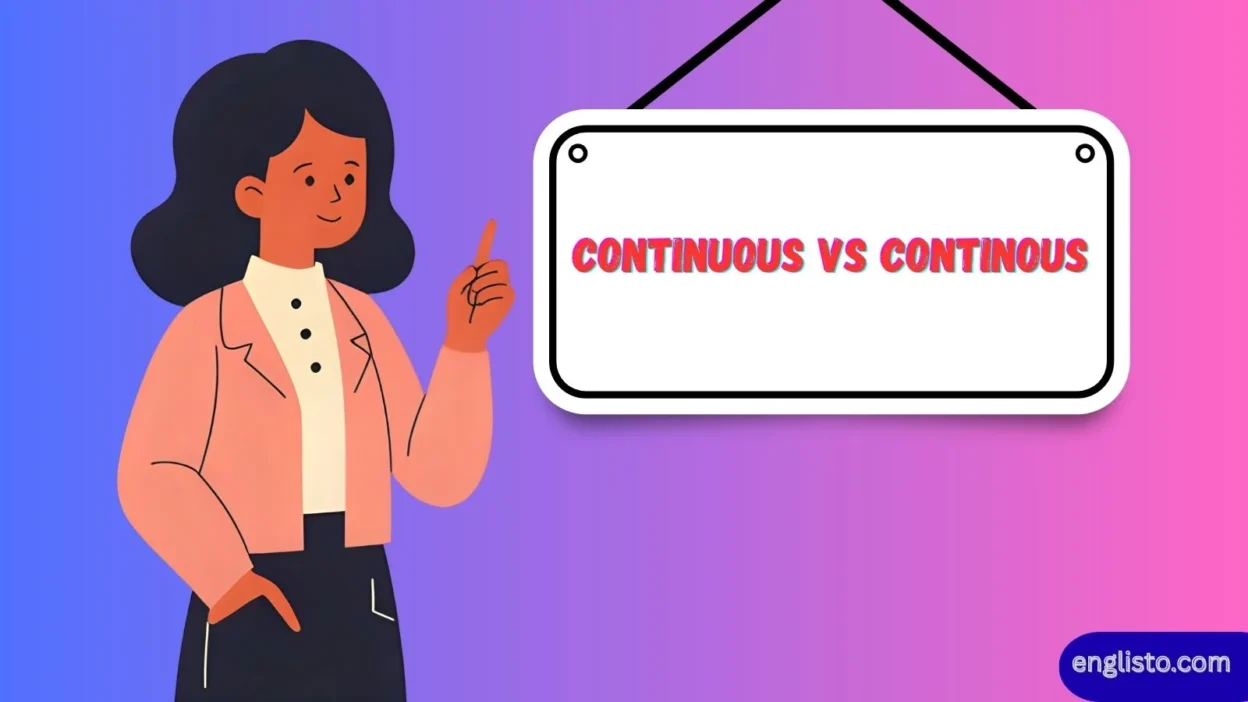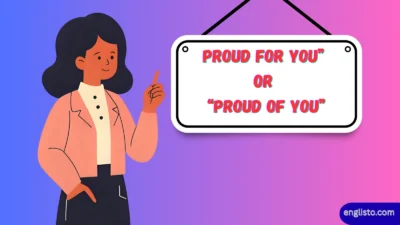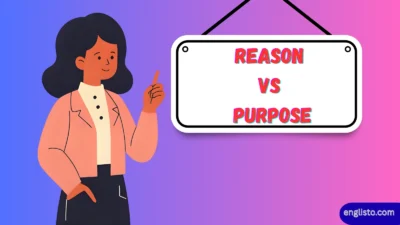Have you ever paused mid-sentence, fingers hovering over the keyboard, wondering whether it’s Continuous vs Continous? You’re not alone. This tiny spelling variation confuses even seasoned writers and professionals. The truth is, one of them is correct — and the other doesn’t exist in standard English. Yet, the wrong form pops up everywhere online, from emails to business reports.
In this detailed guide, we’ll explore “continuous vs continous” — breaking down their meanings, grammar, pronunciation, common errors, and real-world usage. You’ll also find handy examples, comparison tables, and memorable tricks to ensure you never mix them up again.
Understanding the Difference
Let’s start with the basics:
| Word | Correct Spelling | Meaning | Example |
| Continuous | ✅ Yes | Something happening without interruption or without a break | The rain was continuous for three days. |
| Continous | ❌ No | Incorrect spelling of continuous | The continous noise kept me awake. ❌ |
In simple terms, “continuous” is the correct word, while “continous” is just a common misspelling. However, the frequency of this typo is surprisingly high — likely because the word is long and the “u” before “o” often gets dropped when typing quickly.
What “Continuous” Really Means
The word “continuous” comes from the Latin continuus, meaning “unbroken” or “joined together.” It describes something that keeps going without pause — like a nonstop event, motion, or action.
Everyday Examples
- Science: “The experiment required a continuous flow of water.”
- Music: “The song played on a continuous loop.”
- Work: “He worked continuously for 10 hours without taking a break.”
- Technology: “Continuous data monitoring ensures system reliability.”
Grammar Note
“Continuous” is an adjective, describing nouns (things, events, or processes). Its adverb form is “continuously.”
Example: The fan hummed continuously throughout the night.
Common Confusion: Continuous vs Continual
Interestingly, even though “continous” is simply incorrect, another pair — continuous and continual — are often confused too. Let’s clear that up while we’re here.
| Word | Meaning | Example |
| Continuous | Happens without stopping | A continuous power supply ensures smooth operation. |
| Continual | Happens repeatedly, but with breaks | The continual interruptions made it hard to focus. |
Think of it this way:
Continuous = No breaks at all.
Continual = Happens again and again, with small gaps in between.
Real-Life Usage: Continuous in Context
The beauty of the English language lies in context. “Continuous” can appear in science, mathematics, business, and even daily speech — each with a slightly different nuance.
In Science and Engineering
- Physics: “A continuous beam of light.”
- Mathematics: “A continuous function is one that doesn’t have gaps or jumps.”
- Engineering: “Continuous production lines operate around the clock.”
In Everyday English
- “She spoke in a continuous stream of enthusiasm.”
- “The continuous rain made the roads slippery.”
- “A continuous power supply is vital for hospitals.”
In Grammar and Tense
You might also recognize “continuous” from English grammar, as in the present continuous tense.
| Tense | Example | Description |
| Present Continuous | She is studying. | Action happening right now. |
| Past Continuous | They were running. | Action that was ongoing in the past. |
| Future Continuous | He will be working. | Action that will be ongoing in the future. |
This grammatical usage is one of the most common encounters with the word “continuous.”
Why “Continous” Is Incorrect
The misspelling “continous” likely results from phonetic confusion — we pronounce “continuous” as /kənˈtɪnjuəs/, where the “u” sound between “n” and “o” isn’t very strong. Many writers subconsciously drop the first “u” when spelling it out.
However, no major dictionary (Oxford, Cambridge, Merriam-Webster, Collins, etc.) recognizes continous as a valid English word. It’s always flagged as a typo or spelling mistake.
Quick Memory Trick
Think: “Continuous has two u’s, because it keeps going — just like the extra letter!”
Synonyms and Related Words
To enrich your vocabulary, here are some synonyms of “continuous” that you can use depending on context:
| Context | Synonyms |
| Time or Action | Constant, Uninterrupted, Ongoing, Unbroken |
| Movement or Flow | Steady, Smooth, Unceasing |
| Effort or Activity | Persistent, Relentless, Sustained |
Example sentences:
- “The machine operates constantly throughout the day.”
- “Their relentless effort led to success.”
- “Water flowed in a steady stream.”
Each of these adds nuance — a subtle shift in tone or emphasis — but they all maintain the idea of continuity.
Common Mistakes and How to Avoid Them
Even proficient English speakers sometimes mix up similar words or fall into typing errors. Let’s review the most common mistakes around “continuous.”
| Mistake | Explanation | Correction |
| continous improvement | Missing “u” before “o” | continuous improvement |
| continous data | Typo | continuous data |
| continous process | Typo | continuous process |
| continous tense | Typo | continuous tense |
Pro Tip
Before sending an important email or report, use a grammar tool or do a quick spell check. Even native speakers slip on this one!
Idioms and Phrases Related to “Continuous”
English is full of expressions that capture the essence of continuity — the idea of something ongoing or never-ending.
- “Keep the ball rolling” — maintain momentum or progress.
- “Go the extra mile” — continue putting in effort beyond expectations.
- “All in a day’s work” — describes something continuous and routine.
- “The show must go on” — emphasizes persistence despite challenges.
All these idioms reflect the same mindset behind “continuous”: ongoing action or dedication.
Continuous in Business and Technology
In professional contexts, “continuous” carries powerful connotations of consistency, quality, and improvement.
Business Usage
| Phrase | Meaning |
| Continuous improvement | A core principle in quality management (Kaizen, Lean, Six Sigma). |
| Continuous delivery | Software updates released frequently and seamlessly. |
| Continuous learning | Ongoing skill development and self-improvement. |
“Continuous improvement isn’t about perfection — it’s about progress without pause.”
Technology and Data
In the digital age, we hear about:
- Continuous integration (CI) – automated code testing during development.
- Continuous monitoring – systems running 24/7 for security or performance.
- Continuous data streams – real-time analytics for businesses.
These aren’t just buzzwords — they embody the essence of being “always on,” “always improving,” and “never stopping.”
Regional Usage and Pronunciation
While “continuous” is universally correct in both British and American English, pronunciation slightly varies:
| Variant | Pronunciation | Example Sentence |
| British English | /kənˈtɪnjʊəs/ | The rain was continuous throughout the weekend. |
| American English | /kənˈtɪnjuəs/ | Continuous learning is essential in modern workplaces. |
“Continous,” however, has no regional or dialectal legitimacy — it’s simply wrong everywhere.
How to Remember the Correct Spelling
Here are a few easy mnemonics to help you lock in the right spelling:
- “Continuous has two U’s, because it goes on twice as long!”
- “Without the U, it’s not true.”
- Visualize the word as con-tin-u-ous — each syllable flows continuously.
Quick Reference Summary
| Aspect | Continuous | Continous |
| Correctness | ✅ Correct | ❌ Incorrect |
| Part of Speech | Adjective | — |
| Meaning | Without interruption | — |
| Adverb Form | Continuously | — |
| Common Use | Grammar, science, business | None |
| Example | Continuous rain drenched the city. | Continous rain drenched the city. ❌ |
Final Thoughts
In the grand scheme of things, “continuous vs continous” may seem like a small difference. But in writing, details matter. Whether you’re drafting an email, designing software documentation, or polishing a blog post, precision builds credibility.
“Language is power — the clearer you write, the stronger your message.”
So remember:
- “Continuous” means uninterrupted, ongoing, unbroken.
- “Continous” is simply a spelling error to avoid.
Next time you type it, give that extra “u” the attention it deserves — because in the continuous flow of communication, accuracy keeps everything running smoothly.



